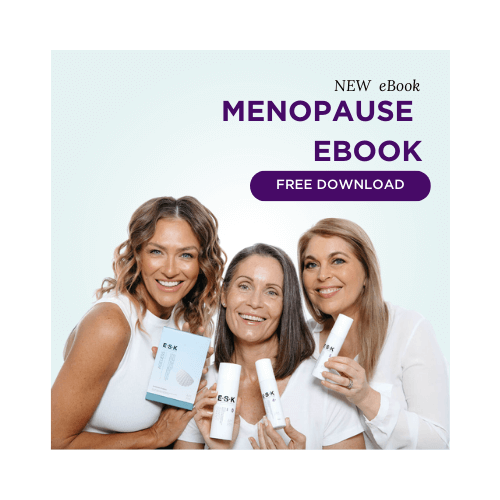
Happy Easter and Happy Anzac day to all who celebrate! At the end of March we released our highly anticipated Soothe and Melt cleansing balm. This gentle balm that is ideally popped onto dry rather than wet skin to cleanse and hydrate at once has been an absolute hit. Loved by our customers and our stockists alike, we have been struggling to keep up with demand. We have ordered more so we shouldn’t run out any time soon. If you are new to the ESK family and this is your first science wrap, I do a deep dive into the latest research on skin that I share at the end of every month to keep you at the cutting edge of skin science!
Here is the latest offering from the 150 odd journals I have scoured through this month!
Pregnancy skin – myths and realities
A new study published in the Journal of Cosmetic Dermatology has highlighted just how common, and misunderstood skin changes during and after pregnancy really are. In a survey of over 300 women in Jordan, nearly all participants reported developing skin changes like hyperpigmentation, hair loss, cellulite, and wrinkles during or after pregnancy, with hyperpigmentation topping the list. But despite the prevalence of these concerns, only 17% were using sunblock and a mere 4% used depigmentation products. Instead, most women got their skincare advice from social media or personal experience, with very few consulting dermatologists. Even women with medical or pharmacy backgrounds weren’t immune to this trend. Many still turned to non-professional sources, highlighting a major gap in awareness and guidance.
The study also found that women had moderate knowledge and mixed satisfaction with the skincare products they used, largely due to unrealistic expectations and common side effects like skin redness. Alarmingly, 43% experienced side effects, but many did nothing or relied on self-diagnosis rather than professional help. This all points to a clear need for better education and support during prenatal care, particularly around what’s normal, what’s not, and which skincare products are safe to use.
When you have acne AND sensitive skin at the same time…
Authors of a new review in the International Journal of Dermatology have developed a holistic strategy that they’ve called One Acne™ to manage acne and sensitive skin together, recognising how often these two conditions overlap and how deeply they affect patients’ lives. The review confirms what many patients know all too well: acne and sensitive skin frequently go hand in hand, and when they do, the emotional and physical toll can be even more intense. While topical retinoids remain the gold standard for treating acne and its long-term effects like scarring and hyperpigmentation, many can trigger irritation, especially in sensitive skin types. That’s where a tailored, stepwise regimen combining retinoids with supportive skincare (think cleansers, moisturisers, SPF, and even corrective procedures like fillers or lasers) can boost results, reduce side effects, and support long-term skin health.
The One Acne™ approach encourages dermatologists to look beyond prescriptions and think whole-picture skincare, especially in patients at higher risk for irritation (e.g., sensitive skin, darker skin tones, hormonal fluctuations). Building a regimen that includes barrier-friendly ingredients like ceramides, niacinamide (vitamin B3), and hyaluronic acid, which hydrate, soothe, and protect the skin is key. People in this boat are best off not skipping sunscreen or over-relying on full coverage makeup that can clog pores. This algorithm champions the use of customised skincare at every step of the acne journey, from initial treatment to scar prevention, to not only improve outcomes, but also enhance confidence, reduce downtime, and make acne care feel a whole lot more personal. Amen to that!
It’s official- temperature fluctuations dry your skin out
A new study in the Journal of Investigative Dermatology just revealed that repeated exposure to daily temperature swings can mess with our skin barrier and potentially set the stage for atopic dermatitis. Using lab-grown human skin models, researchers simulated daily cycles of cooler (25°C) and warmer (37°C) temps for several days in a row. The result? A significant and lasting drop in filaggrin, one of the MVP proteins that keeps our skin barrier strong. Not only did this lead to increased transepidermal water loss (aka, your skin leaks moisture), but it also triggered a spike in inflammatory cytokines like IL-1β, TSLP, and IL-33, many of which stayed high even after the skin was returned to normal temps.
The researchers traced a lot of this trouble back to TRPV1, a heat-sensitive receptor on skin cells. When they blocked or silenced TRPV1, the skin barrier proteins bounced back and inflammation dropped. A topical TRPV1 blocker (asivatrep) has already shown promise in trials for AD, so this could open the door to new, climate-targeted therapies. But this study seems to confirm what many of us already knew- that our skin doesn’t love dramatic weather shifts.

